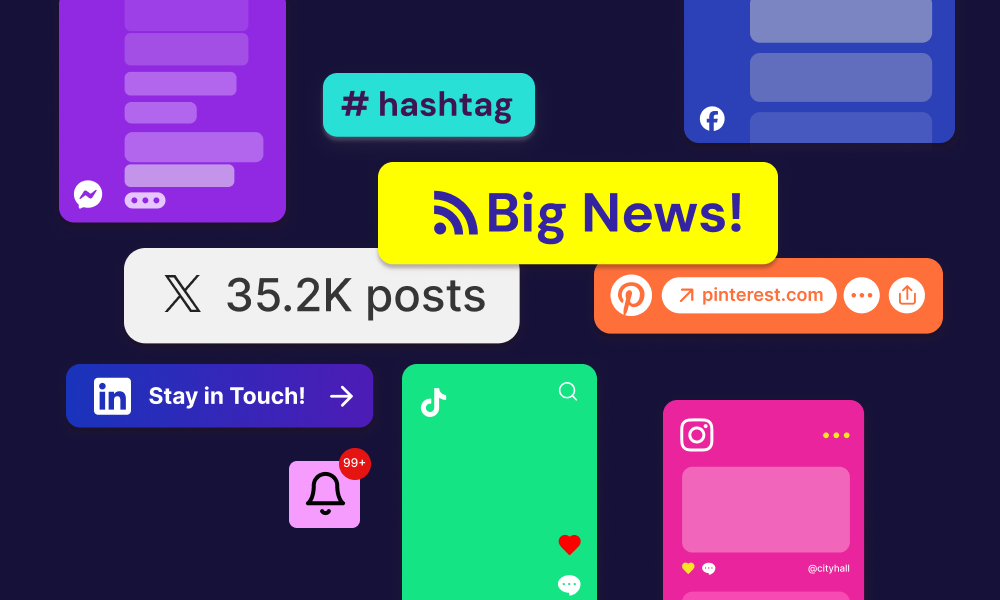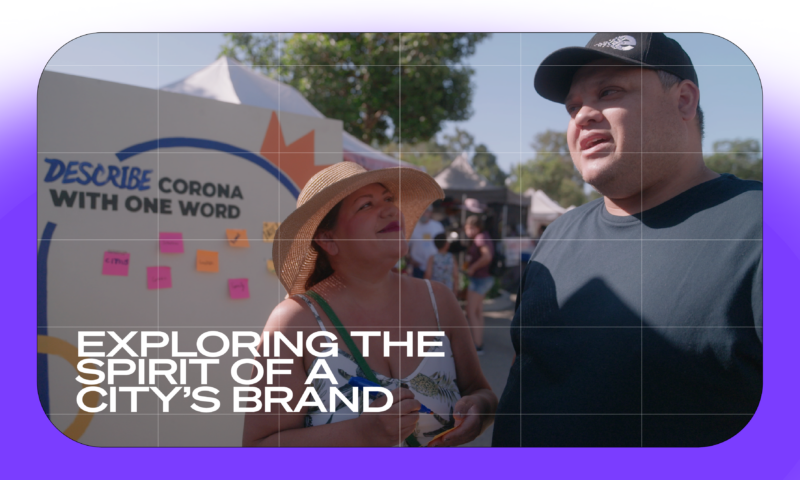Social Media's Authority: Navigating the Public Sector in the Digital Age
Related Services
Credits
Writer: Alberto Alvarado & Sanela Kurtek
Editor: Viri Serrano
Designer: Tracy Fu

Nearly 70% of Americans—about 230 million people — are active on Facebook. But it’s not just Facebook; other Social Media channels such as Instagram, Twitter, YouTube, and Snapchat also play a huge role in shaping our society.
Social Media’s Authority: Navigating the Public Sector in the Digital Age
According to Forbes, Americans spend 5% of their lifetime –around 1.2 to 2.5 hours per day– on Social Media, showing how important these platforms are in our daily lives, including how we interact with government agencies.
We have witnessed the crucial role of social media during emergencies and natural disasters. Government agencies utilize platforms like Twitter to share real-time information and safety updates with the public promptly. However, social media’s impact in the public sector extends beyond just delivering alerts to citizens.
Building Trust and Combating Misinformation
With so much information out there, social media can sometimes spread misinformation. However, it also gives agencies an impactful tool to combat false information and stay transparent, crucial for earning public trust.
Empowering Citizen Engagement
Social Media has emerged as a critical tool for government agencies to engage with citizens and extend outreach efforts. Platforms such as Twitter and Facebook are handy for sharing urgent information, responding to inquiries, and collecting feedback from the public, fostering a stronger connection between agencies and the communities they serve.
An excellent example of the importance of building this connection is FireSafe Corona, an organization in the City of Corona, California. Their primary goal is to inform, prepare, and create fire-adapted, resilient communities capable of withstanding major wildfires. Establishing a strong social media presence was crucial for achieving this objective. Pastilla was entrusted to assist them in this venture, not only to provide relevant information to the community but also to foster a strong bond with the various demographic groups of residents.
Furthermore, agencies leverage Social Media data and analytics to guide policy decisions and gauge public sentiment on various issues. Agencies gain insights into public concerns and reactions to government initiatives by monitoring social media platforms.
Adapting to Ever Changing Trends
Social Media has undergone significant evolution over the years, requiring government agencies to adapt their communication strategies to maintain trust and impact. Today, people engage with content differently than they did a decade ago. Social Media trends provide valuable insights into audience behavior and interests, effectively informing content decisions.
One major challenge is that many public agencies have not aligned their brands with social shifts, holding back their communication evolution. They often adhere to outdated brand pillars that only resonate with some demographic groups, especially younger audiences who are hesitant to engage with government initiatives.
To address this challenge, it’s crucial to break down barriers between different audience groups and create inclusive content that appeals to all target demographics. But how can this be achieved? Community validation.
Building recognition requires validating your presence among audiences. This involves increasing reach and engagement by developing appealing content in voice, tone, visuals, and clarity. Remember, correctness doesn’t have to sacrifice engagement—it’s about balancing professionalism with relatability and creativity.
By tapping into the power of Social Media, government agencies can significantly enhance engagement, foster transparency, and remain relevant in the digital era. Leveraging social media helps forge connections, cultivate trust, and make meaningful impacts within our communities. Clear and accessible communication is vital for nurturing strong relationships and fostering collaborative efforts that benefit everyone. Ultimately, embracing the opportunities social media presents drives positive change and fortifies our collective future.

